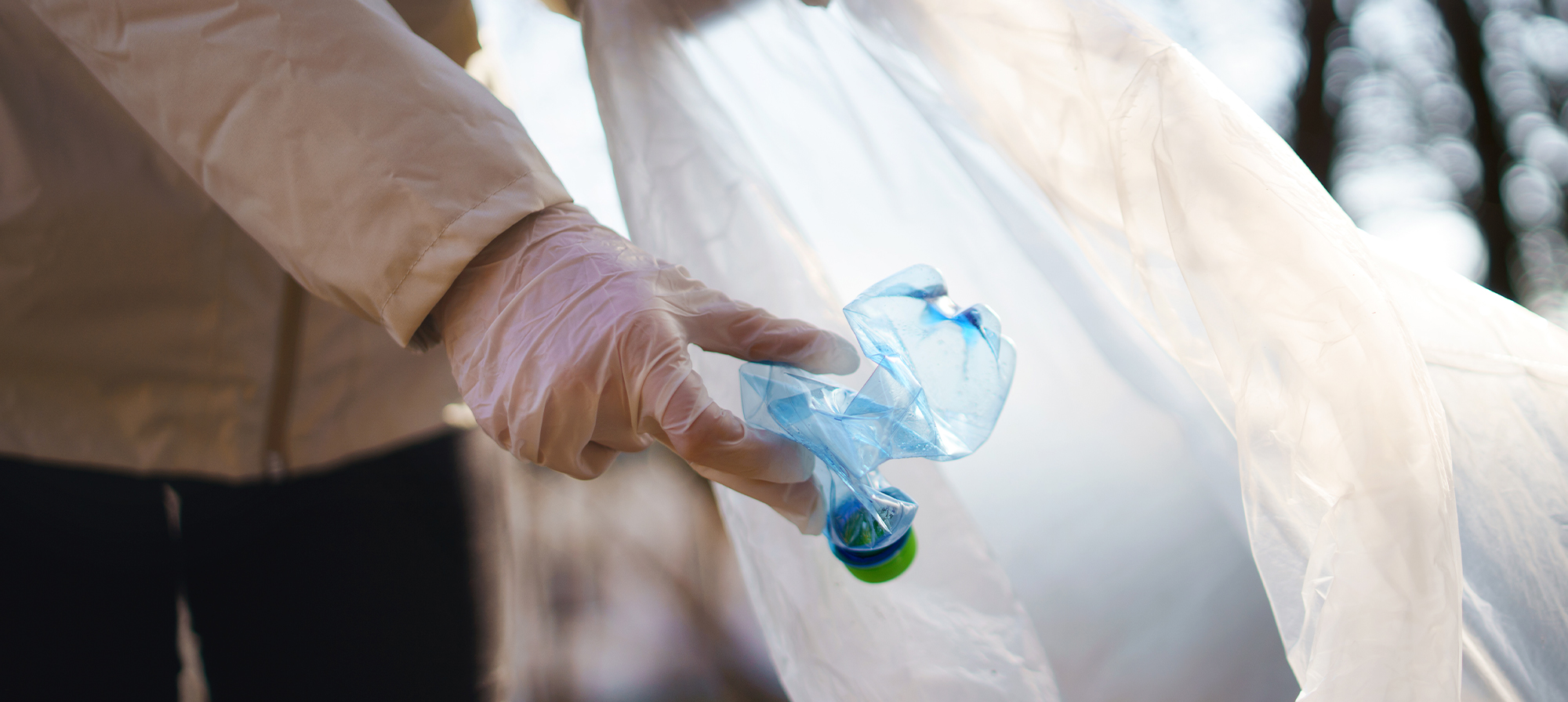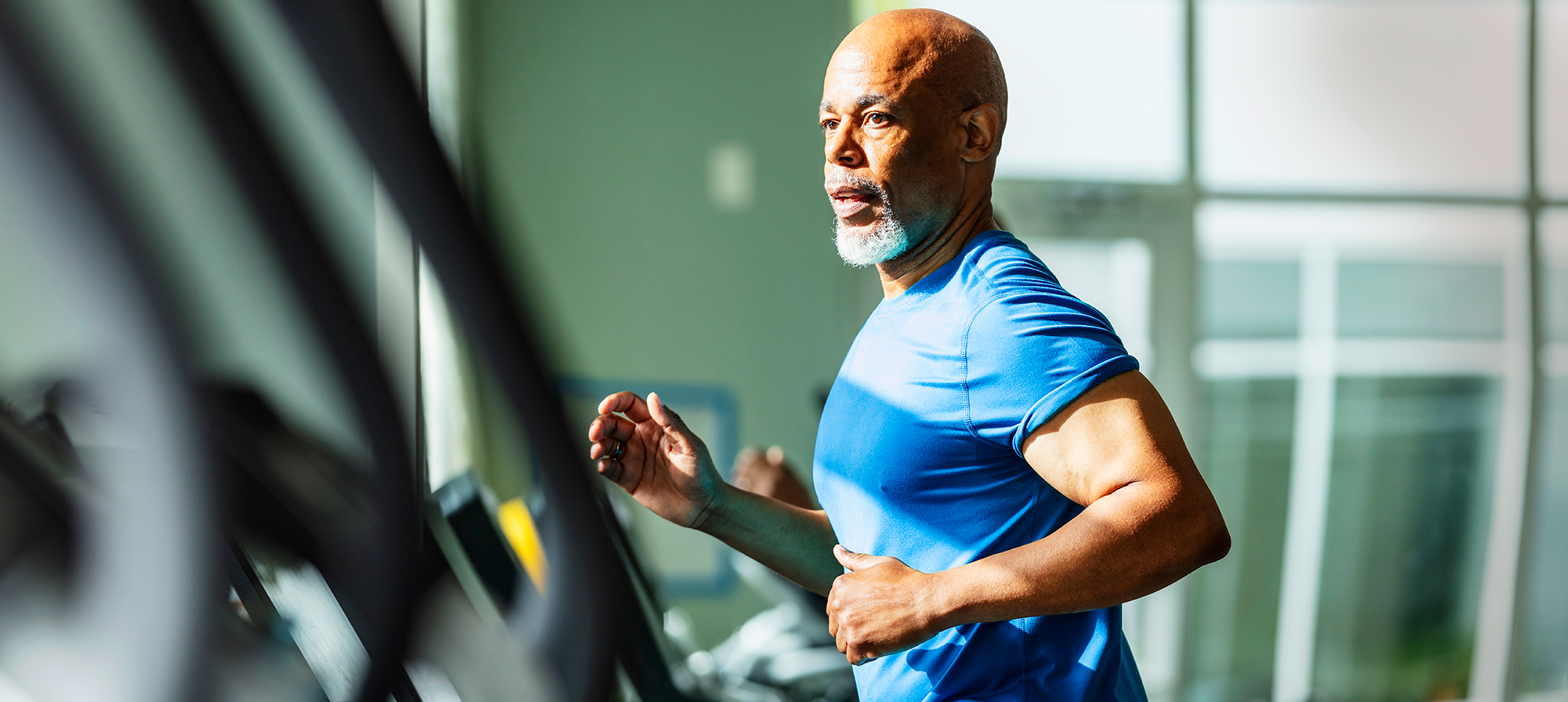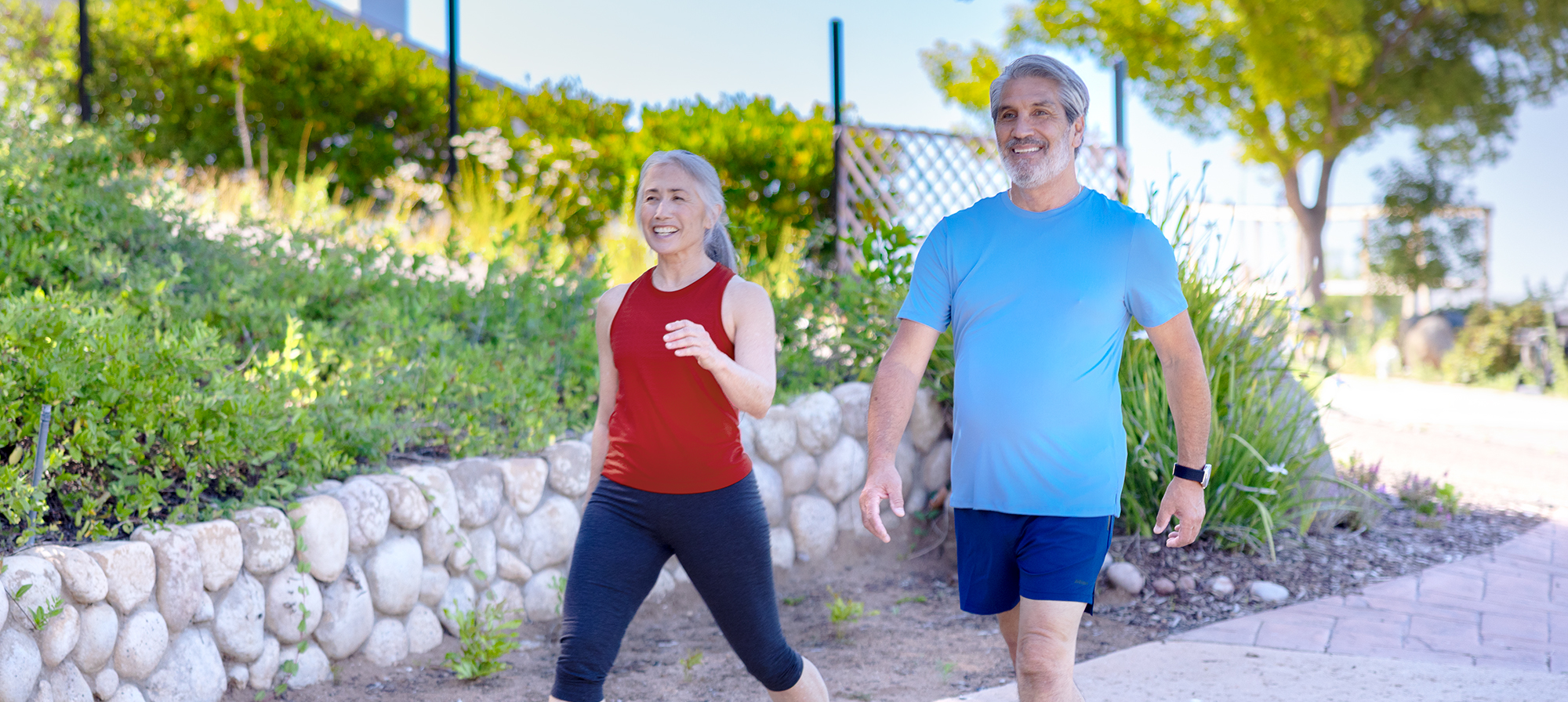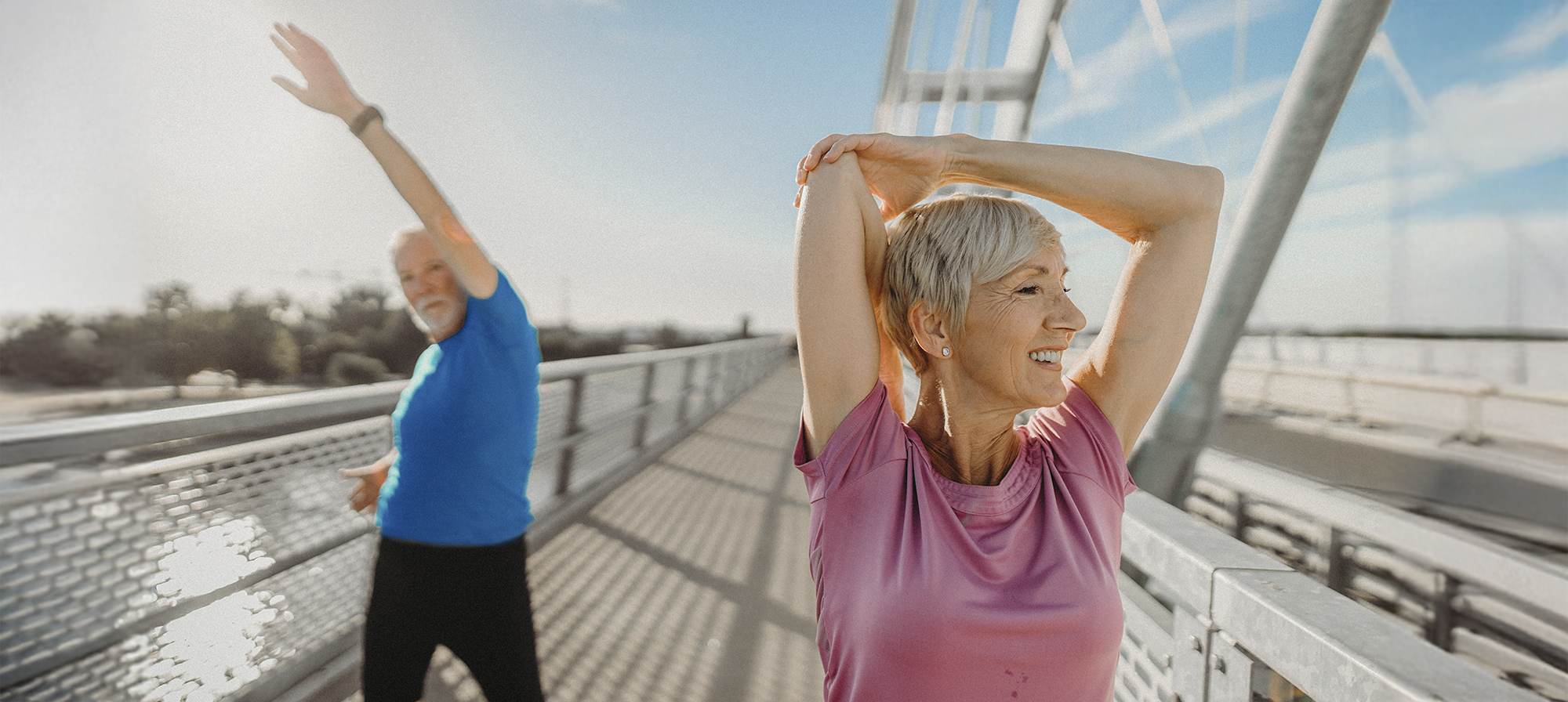Combining your fitness routine with a good deed may enhance your workout motivation in a big way. Plogging (picking up litter while you walk or jog) is a fun, easy way to do this. And it comes with a range of other nifty health perks, too.
Starting and sticking with a fitness routine is vital for sound physical and mental health. Turns out that when you combine your workouts with a good cause, you’re more likely to get out and do both more often. That’s a win-win for your workout motivation and your health and well-being, too.
Take Tom, a graphic designer in San Diego. He and his wife are an active couple who enjoy getting out and making the most of the warm Southern California weather.
But something grabbed their attention each time they went out for a walk or run.
“We walk around our neighborhood each day and would often see litter along the sides of the road,” said Tom.
Before long, they weren’t just bringing their water bottles with them on runs and walks. Now they also bring a bucket, reusable gloves, and grabber tools. They’ve made it a habit to clean up litter during their outings.
“We began plogging to keep us more engaged with the environment and our community,” Tom added. “Knowing that we’re making a direct impact is a very positive feeling. We can see an immediate change for the better from our actions.”
If you’re like Tom, you may want to give plogging a try yourself, especially if you’re concerned about plastic waste and other trash in your community. Let’s take a closer look at what plogging entails and some of its many benefits.
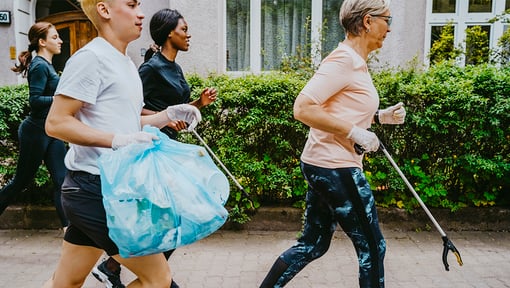
Plogging for your health
Plogging is a fitness trend that started in Sweden but is now popular all over the world. It involves picking up litter in your neighborhood—or on any trail or route you choose—while you’re out running, jogging, walking, or hiking. Plogging comes with a number of health perks:
- Cardio gains. When you stay active with walking, hiking, jogging, or running it can support greater cardio fitness. It’ll help strengthen your muscles, your heart, and your lungs.
- Greater functional fitness. Because plogging also involves bending, reaching, and squatting, your outings can help boost your functional fitness, too. That can help you do daily tasks with greater ease. That includes bending down to tee up on the golf course, reaching into a cupboard to get a coffee cup, or squatting down to pick up a bag of groceries.
- A better buffer from stress. Research suggests that helping others or working for a cause you care about can help protect you from the harmful impacts of stress on your body .
Plogging may also ease stress by helping you connect in positive ways with others in your neighborhood.
“We often cross paths with local residents when we’re out plogging,” Tom said. “Seeing a smile and a positive remark is almost a guarantee.”
- Helping the planet. Concerns about the environment have jumped in recent years. If you’re like many, you may be feeling stressed about the planet, too. But research suggests that channeling your worry into action can ease that stress and help the planet in the bargain. Plogging is one way to help keep plastic out of the oceans.
Tom points out that helping the planet is a key reason he and wife got started with plogging.
“It’s an extension of other environmental efforts in my life: better recycling, composting, limiting the use of single-use plastics and plastic products, and incorporating zero-waste practices. All of these can help limit what’s thrown away.”
Tom also tries to maintain a balanced mindset when it comes to taking action for the environment.
“Every little bit helps. There’s no need to take an ‘all-or-nothing’ approach. I began plogging to be proactive about helping the environment, without feeling guilty when I just want to spend time outside.”
- Better workout motivation. Because volunteering for a cause you care about boosts happiness and your sense of life purpose , plogging may offer built-in workout motivation. Plus, if you prefer working out with others, you can join a plogging group to boost your drive even more.
- A win-win for energy and mood. Research suggests that outdoor workouts may boost your mood and well-being even more than indoor workouts do.
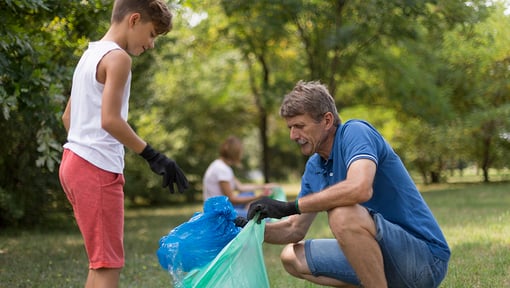
A how-to plogging checklist
If you do decide to give plogging a shot, here’s a short checklist to keep in mind for your first outing:
- Wear supportive, comfortable shoes.
- Protect your skin with sunscreen, hat, and sunglasses.
- Bring water—maybe even carry more than you think you’ll need.
- Keep your cell phone and ID with you.
- Bring something to collect your trash in. A large plastic trash bag will do. But in the spirit of being eco-friendly, think about using a biodegradable bag. Or you can use a reusable canvas tote or bucket. Just toss it in the wash between outings.
- Wear gloves—or at least a glove on your “picking” hand.
- If bending down is hard for you, bring along a grabber tool on a pole.
- Make sure to clean your gloves, tools, and plogging containers after each use.
- Recycle the plastic trash you pick up versus throwing it in the garbage can. More and more types of plastic can be recycled than ever before.
Keep in mind that you don’t have to include plogging in every walk or run you take. You might schedule it for one or two outings a week. And you don’t have to pick up every single piece of trash on every outing. Give yourself time to get the hang of it and pick up what trash you can.
“Like any new activity, give yourself time to become familiar with what plogging entails," Tom suggests. “Learning to spot the litter around you, grabbing what’s accessible, and being safe and mindful of any cars, bikes, or pedestrians is important.”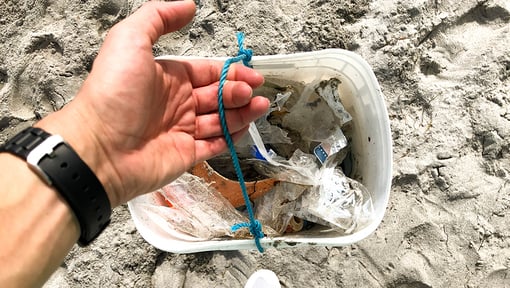
Take it to the next level
If you choose to get even more involved, check to see if there’s a neighborhood cleanup crew you could join. Many of these groups are made up of volunteers of all ages that meet on a routine basis to help pick up litter around the neighborhood or local parks. You can search online for groups who use plogging as their mode of clean up.
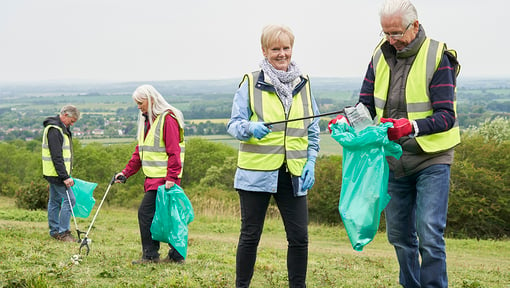
Talk with your doctor before you go plogging
Keep in mind that plogging involves quite a bit of stooping, bending, and squatting. If you have back or knee pain, talk with your doctor first. And mind your posture or use a pole grabber to pick up litter to prevent back or joint pain.
If plogging is not your thing, you might think about joining some other kind of group. Some groups also beautify their neighborhoods with landscaping projects. If it’s safe for you to do so, building rock borders and planting trees and native shrubs is also a great way to get fit. So is weeding, plowing, and harvesting fruits and veggies from a community garden.
Any way you can find to show a little civic pride and give back is also a great way to stay fit, healthy, and happy.
Plogging is an easy and fun way to get outside and make a difference. And the more people who get involved, the bigger the impact you’ll make. Along the way you’ll get some exercise, meet your neighbors, make new friends, and help the planet to boot.
Not a Silver&Fit® member? Learn more about everything the program has to offer, including more helpful healthy living tips like this, here on our website.
This information is not intended to take the place of regular medical care or advice. Please check with your doctor before using this information or beginning any self-care program. Tom is not a member of the Silver&Fit Program. Images used for this article do not depict Tom or any members of the Silver&Fit Program.
References
Barth, M., Masson, T., Fritsche, I., Fielding, K., Smith J. R. (2021, April). Collective responses to global challenges: The social psychology of environmental action. Journal of Environmental Psychology, 1, 101562.https://www.sciencedirect.com/science/article/abs/pii/S0272494421000153
Baudon, P., & Jachens, L. (2021). A scoping review of interventions for the treatment of eco-anxiety. International Journal of Environmental Research and Public Health, 18(18), 9636. https://www.ncbi.nlm.nih.gov/pmc/articles/PMC8464837/
Bea, S. (2022, December 27). Wanna give? This is your brain on a ‘helper’s high.’ https://health.clevelandclinic.org/why-giving-is-good-for-your-health
Fraser, M., Munoz, S., & MacRury, S. (2019). What motivates participants to adhere to green exercise? International Journal of Environmental Research and Public Health, 16(10). doi:10.3390/ijerph16101832
Graham, K. (2024, June 19). Get out! 5 benefits of outdoor exercise. https://www.acefitness.org/education-and-resources/lifestyle/blog/6360/get-out-5-benefits-of-outdoor-exercise
Keep America Beautiful. (2021). Through collective impact, we can make sure that everyone lives in a beautiful community. https://kab.org/
Laskowski, E. R. (2022, July 13). What are the risks of sitting too much? Mayo Clinic https://www.mayoclinic.org/healthy-lifestyle/adult-health/expert-answers/sitting/faq-20058005
Poulin, M., & Holman, E. (2013). Helping hands, healthy body? Oxytocin receptor gene and prosocial behavior interact to buffer the association between stress and physical health. Hormones and Behavior, 63(3), 510-517. doi:10.1016/j.yhbeh.2013.01.004
Raghavan, R., Panicker, V. V., Emmatty, F. J. (2020). Posture-based assessment of plogging activity. July 2020 Conference of the Institute of Electrical and Electronics Engineers. https://ieeexplore.ieee.org/abstract/document/9262447
Sardinha, A. (2020, January 24). Plogging” trend takes over as students strive to eliminate waste. North Carolina State University. https://news.dasa.ncsu.edu/plogging-trend-takes-over-as-students-make-strides-to-eliminate-waste/
Segal, J., & Robinson, L. (2024, August 21). Volunteering and its surprising benefits. https://www.helpguide.org/articles/healthy-living/volunteering-and-its-surprising-benefits.htm
This article was written by Jason Nielsen, edited by Gail Olson, and clinically reviewed by Jossue Ortiz, DC. Last reviewed by Jaynie Bjornaraa, PhD, MPH, PT, SCS, LAT, ATC, CSCS, CSPS, on January 24, 2025.
